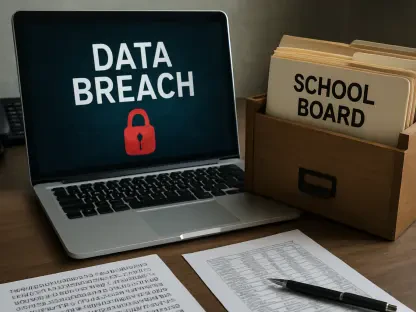In 2024, the spotlight is on IT leaders, educators, and technologists who are revolutionizing higher education. These visionaries provide crucial insights on integrating technology into learning and administration, ensuring institutions can meet modern demands and prepare students for the future. This article outlines the top influencers shaping higher ed IT.
Introduction to Influential Figures in Higher Ed IT
The role of IT in higher education has become indispensable. As colleges and universities tackle challenges like enrollment, retention, and the integration of cutting-edge technology, certain individuals stand out for their notable contributions and leadership. These influencers showcase expertise in areas ranging from AI incorporation to cybersecurity, and their work is pivotal for institutional success. The impact of these leaders can be seen in the transformative initiatives they spearhead, which are designed to address the evolving needs of both students and faculty. By leveraging their knowledge and experience, they help institutions navigate the complexities of modern education, ensuring that technology serves as a cornerstone of progress and improvement.
Pioneers in Artificial Intelligence and Digital Literacy
Artificial intelligence and digital literacy are critical areas in higher education IT. Leaders like Anna Mills and Katie Conrad are at the forefront of integrating these components into academic environments. Mills, an advocate for AI literacy, diligently compiles and shares invaluable resources for educators, emphasizing the ethical considerations of AI use in teaching. Her work not only helps educators understand AI but also guides them in implementing it responsibly. Similarly, Conrad champions AI ethics, leading initiatives within the teaching framework to ensure that the integration of AI is both effective and responsible. She is dedicated to fostering an environment where AI can be used to its full potential without compromising ethical standards.
These leaders focus on advancing AI and digital literacy, recognizing the transformative potential of artificial intelligence in higher education. Their efforts are aimed at equipping both educators and students with the skills needed to navigate a digital world. By focusing on ethical AI usage and promoting comprehensive digital literacy, they contribute to a future where technology enhances the educational experience. The importance of their work cannot be overstated; as technology becomes increasingly integrated into education, the need for informed and ethical usage grows correspondingly.
Innovators in Instructional Design and Technology-Enhanced Learning
Instructional design and technology-enhanced learning are essential for creating dynamic and effective educational experiences. Influencers like Enilda Romero-Hall and Peggy Semingson are making significant strides in these areas. Romero-Hall’s research focuses on instructional design, with an emphasis on creating engaging and flexible learning environments. She explores innovative ways to integrate technology into the curriculum, ensuring that learning experiences are both interactive and effective. Her work is vital in helping educators design courses that meet the diverse needs of students, making learning more accessible and enjoyable.
Semingson, on the other hand, offers insights through her Pedagogy NEXT podcast, where she discusses effective online learning strategies. Her contributions lie in crafting interactive multimedia and online platforms that enrich the learning experience. By sharing best practices and innovative ideas, she helps educators adapt to the ever-evolving landscape of online education. The insights offered through her podcast are crucial for educators looking to enhance their teaching methods and make the most of technology.
Together, Romero-Hall and Semingson are paving the way for a new era of instructional design. Their work demonstrates the potential of technology-enhanced learning environments to transform education. By focusing on the creation and implementation of interactive and flexible learning modalities, they ensure that students receive a holistic and immersive educational experience.
Strategic Leaders in Technology Adoption
Strategic leadership in technology adoption is critical for institutions aiming to stay competitive and innovative. Influencers like Julie Schell and Ed Aractingi exemplify effective leadership in this domain. Schell drives the use of academic technology at The University of Texas at Austin, enhancing teaching practices through strategic implementations. Her leadership ensures that technology is used effectively to improve educational outcomes. She focuses on aligning technological initiatives with academic goals, thereby fostering an environment of continuous improvement and innovation.
Aractingi, the CIO at William & Mary, serves on multiple advisory boards where he guides discussions on tech innovation. His role involves setting the strategic direction for technology adoption within the institution. By participating in advisory boards, he brings valuable insights and perspectives to the table, helping shape the future of educational technology. His leadership ensures that the institution remains ahead of the curve, adopting technologies that enhance both teaching and administrative processes.
The contributions of Schell and Aractingi highlight the importance of strategic leadership in technology adoption. Their efforts demonstrate how effective leadership can enable institutions to navigate the rapidly changing landscape of educational technology. By setting a clear strategic direction and fostering a culture of innovation, they ensure that technology adoption leads to tangible improvements in education.
Champions of Student Success and Outcomes
Enhancing student success is a primary objective for higher education leaders. Influencers like Bridget Burns and Dan Greenstein are exemplary in their efforts to improve student outcomes through innovative practices and collaboration. Burns, in her role at the University Innovation Alliance, focuses on initiating collaborative improvements that drive student success. She believes in the power of innovation and collaboration to transform educational experiences and outcomes. By working together with other institutions, she helps create strategies that can be implemented widely to benefit a large number of students.
Greenstein, as the Chancellor of Pennsylvania’s State System of Higher Education, has been instrumental in redesigning educational models using data and technology. His work involves leveraging data to inform decision-making processes and create more effective educational strategies. Through his contributions, he ensures that institutions can adapt to changing student needs and enhance their learning experiences. His approach to using data and technology to improve student outcomes is a testament to the power of informed decision-making and strategic thinking.
Together, Burns and Greenstein are dedicated to redefining student success in higher education. Their innovative practices and collaborative efforts lead to significant improvements in educational models and student outcomes. By focusing on data-driven approaches and fostering partnerships, they contribute to a holistic understanding of what it means to be successful in higher education.
Experts in Cybersecurity and IT Governance
Cybersecurity and IT governance are paramount in safeguarding educational technologies. Influencers like Randy Marchany and Saby Waraich play key roles in ensuring the security and integrity of institutional data. Marchany, the CISO at Virginia Tech, is renowned for his contributions to cybersecurity efforts. His work involves developing strategies to protect campus networks and sensitive data from cyber threats. His expertise in IT security is crucial for maintaining the trust and reliability of educational institutions.
Waraich, with his expertise in IT leadership, focuses on governance, risk, and compliance to secure institutional data. His approach to IT governance emphasizes the importance of aligning IT practices with institutional goals and regulatory requirements. He ensures that institutions are not only secure but also compliant with industry standards and best practices. His leadership in IT governance helps institutions navigate the complexities of cybersecurity, ensuring that they are well-prepared to handle any potential threats.
The efforts of Marchany and Waraich underscore the importance of cybersecurity and IT governance in higher education. Their work ensures that educational institutions can operate securely and efficiently in an increasingly digital world. By focusing on risk management and compliance, they help institutions create robust cybersecurity frameworks that protect both data and reputation.
The Unified Vision for Technology in Higher Education
The influencers discussed in this article represent a diverse yet unified vision for technology in higher education. Their collective efforts highlight the transformative potential of technology to enhance educational practices, improve student outcomes, and secure institutional data. By focusing on areas such as AI integration, instructional design, strategic leadership, student success, and cybersecurity, they provide a comprehensive approach to leveraging technology in education.
The work of these influencers demonstrates that technology, when used effectively and ethically, can significantly enhance the educational experience. By promoting digital literacy, fostering innovative instructional designs, providing strategic leadership, driving student success, and ensuring cybersecurity, they contribute to a holistic and forward-thinking approach to higher education.
Concluding Insights
In 2024, the focus is firmly on leaders in information technology, educators, and technologists who are transforming higher education as we know it. These innovating minds are offering essential insights into how technology can be seamlessly integrated into both learning and administrative processes. This integration is vital for educational institutions aiming to meet the ever-changing demands of modern society and adequately prepare their students for the challenges and advancements of the future.
The article highlights those who are at the forefront of shaping higher education through IT. It showcases the top influencers, delineating their contributions and ideas that are steering this critical evolution. These visionaries guide how institutions can leverage technology to enhance educational delivery, streamline administrative tasks, and create a more immersive and effective learning environment.
In an age where technological proficiency is crucial, these leaders are empowering educators and students alike. From developing new digital tools to fostering innovative online learning platforms, these influencers play a pivotal role. They not only envision the future but actively build it, ensuring universities and colleges are equipped to handle the demands of a digital world. Through their expertise, higher education can evolve to become more accessible, efficient, and forward-thinking, ultimately benefiting students and educators.









